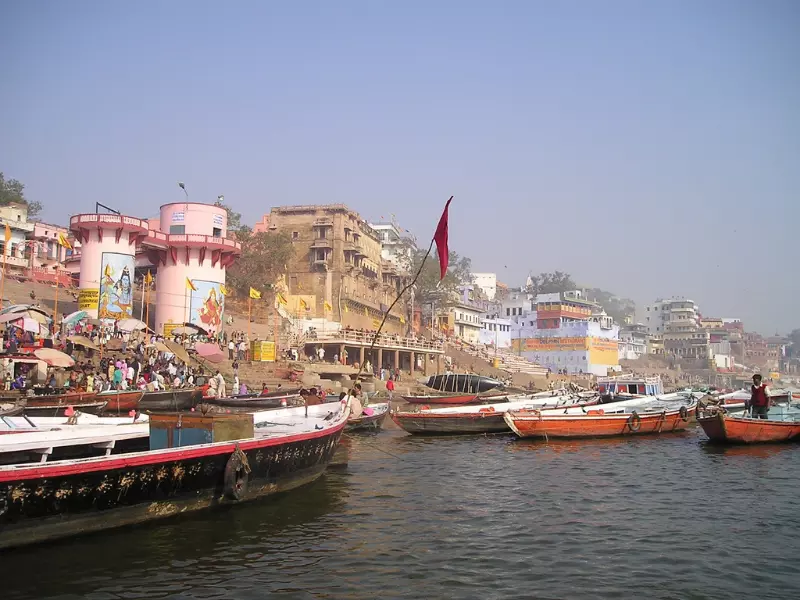
The Union Government authorised the Namami Gange Programme as a “Flagship Program” in June 2014, with a budget allocation of Rs.20,000 crore, to achieve the dual objectives of comprehensive pollution prevention, conservation, and regeneration of the National River Ganga.
The government is focused on incorporating people living along the river’s banks to achieve lasting benefits, which is a huge shift in execution. The programme also incorporates the States and local level institutions like Urban Local Bodies and Panchayati Raj Institutions in deployment, drawing on lessons acquired from the initial implementation. This National Mission for Clean Ganga (NMCG) and its equivalent state organisations, State Initiative Management Groups, will implement the programme (SPMGs).
Major accomplishments of the Namami Gange Programme:
1. Increasing Sewerage Treatment Capacity: In the provinces of Uttarakhand, Uttar Pradesh, Bihar, Jharkhand, West Bengal, Delhi, Himachal Pradesh, Haryana, & Rajasthan, 70 sewage management projects are now being implemented, and 73 sewage projects have been completed. Eleven sewage projects are undergoing bidding in these states, and six new sewage projects have been begun. The building of a sewage capacity of 5023.98 m3 is now underway (MLD).
2. River-Front Development: 63 Ghats/Crematoria projects have been launched for the building, modernisation, and repair of 262 Crematoria and Kunds/Ponds.
3. River Surface Cleansing: River Surface Cleaning is underway and has been brought into operation at 11 places for the removal of floating solid debris from the surfaces of the Ghats and River, as well as its disposal.
4. Conservation of Biodiversity: One of NMCG’s long-term goals for Ganga renewal is to reintroduce viable populations of the river’s endemic and endangered wildlife, allowing them to reclaim their historical range and play their part in sustaining the river’s ecological integrity. To resolve this, the Wildlife Institute of India (WII) in Dehradun, the Central Inland Fisheries Research Institute (CIFRI) in Kolkata, and the Uttar Pradesh State Forest Department has been granted initiatives to create a science-based underwater species maintenance program for the Ganga River incorporating multiple stakeholder groups, as well as aquatic biodiversity protection and conservation.
5. Afforestation: Enhancing the production and richness of forests in headwater areas all down the river and its tributaries are one of the primary components of Ganga rejuvenation. As a result, the Forest Research Institute (FRI) in Dehradun developed a Detailed Project Report (DPR) on afforestation in the Ganga riverbank regions of Uttarakhand, Uttar Pradesh, Bihar, Jharkhand, and West Bengal at the cost of Rs. 2293.73 crores. The FRI DPR calls for projects to be organised into four categories: wilderness, agricultural landscape, urban landscape, and preservation intervention. The planned forestry treatments are primarily intended to assist in the overall protection of the Ganga River, including enhancing the river’s flow (Aviralta) by using a multi-pronged strategy across the Ganga riverscape. Since 2016-17, the State Forest Departments of Uttarakhand, Uttar Pradesh, Bihar, Jharkhand, and West Bengal have been implementing the “Forestry Interventions for Ganga” project as per the FRI DPR, with NMCG providing financial assistance to the various State Forest Departments.
6. Public Awareness: To make a strong appeal for public awareness and community engagement in the programme, a set of actions such as rallies, workshops, seminars, and conferences, as well as many IEC activities, were arranged. Rallies, campaigns, expositions, shram daan, hygiene drives, contests, plantation drives, and the creation and dissemination of resource materials were organised, and mass media such as TV/Radio, print media ads, advertorials, featured articles, and advertorials were published for wider publicity. The Gange Theme Song was extensively distributed and broadcast on digital media to increase the program’s awareness. NMCG established a presence on social media sites such as Facebook, Twitter, and YouTube.
7. Monitoring of Industrial Effluent: In April of this year, there were 1072 Grossly Polluting Industries (GPIs). GPIs are regulated and enforced by routine and surprise inspections to comply with established environmental standards. The GPIs are also examined by third-party technical institutions every year for pollution norm compliance verification and procedure improvement if needed. In 2017, the first round of GPI inspections by third-party technical institutes was completed. In 2018, the second round of GPI inspection was finished. In 2018, 636 GPIs were found to comply, 110 were found to be non-compliant, and 215 were self-closed. One hundred ten non-compliant GPIs have been sanctioned and given closure orders under Section 5 of the ESA (P) Act.
8. Ganga Gram: In five states, the Ministry of Drinking Water and Sanitation (MoDWS) designated 1674 Gram Panchayats on the Ganga’s banks (Uttarakhand, Uttar Pradesh, Bihar, Jharkhand, West Bengal). The Ministry of Drinking Water and Sanitation (MoDWS) has received Rs 578 crore for the building of toilets in 1674 Gram Panchayats across five Ganga Basin States. MoDWS has finished the building of 8 53,397 toilets out of 15 27,105 units. A consortium of seven IITs has been working on the Ganga River Basin Plan, and 13 IITs have chosen 65 communities to promote as model villages. The UNDP has been tasked with implementing the agricultural sanitation programme and developing Jharkhand as a representative state at the cost of Rs. 127 crore.
Why do we require the “Namami Gange” programme?
- The Ganga has enormous economic, environmental, and cultural importance in India.
- The river flows for more than 2,500 kilometres across the lowlands of north and eastern India, emerging in the Himalayas before descending into the Bay of Bengal.
- The Ganga basin stretches into Nepal, China, and Bangladesh, making up over 26% of India’s total land area.
- The Ganga is also another of India’s sacred rivers, with cultural and spiritual importance that extends beyond the basin’s borders.
The National Mission for a Clean Ganga aims to mobilise the finest possible expertise and resources for Ganga restoration worldwide. Many foreign countries with expertise in river restoration have long been drawn to a clean Ganga. Australia, the United Kingdom, Germany, Finland, Israel, and other countries have partnered with India on Ganga rejuvenation. To synchronise government schemes, Memorandums of Understanding (MoUs) were signed with the Ministry of Human Resource Development, Ministry of Rural Development and Railways, Ministry of Shipping, Tourism and, Ministry of Ayush, Ministry of Petroleum, Ministry of Youth Affairs and Sports, Ministry of Water And sanitation Services, and Ministry of Agriculture.


























